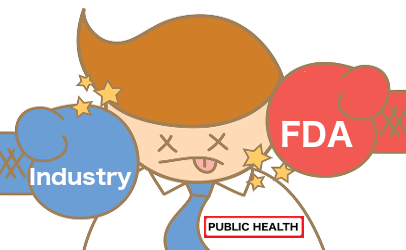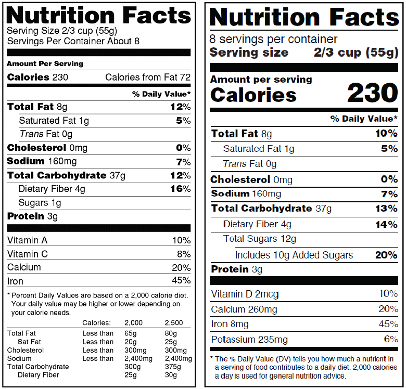Editor’s note: This contributed opinion column by Dr. Peter G. Lurie, president of the Center for Science in the Public Interest is republished here with permission. To read this column on the CSPI website, click here.
 The Food and Drug Administration’s decision to cave in to food industry demands and delay the deadline for companies to update their Nutrition Facts labels harms the public’s health, denies consumers vital information, and creates an unfair and confusing marketplace as many companies have gone ahead with the labels anyway.
The Food and Drug Administration’s decision to cave in to food industry demands and delay the deadline for companies to update their Nutrition Facts labels harms the public’s health, denies consumers vital information, and creates an unfair and confusing marketplace as many companies have gone ahead with the labels anyway.
The FDA, which published the final rule for Nutrition Facts updates in May 2016, has now delayed the deadline to use the new labels from July 2018 to January 2020 for large companies. It has further delayed compliance for small companies from July 2019 to January 2021, and they account for a whopping 90 percent of the industry.
The FDA’s delay, announced as a proposed rule that provides for public comment, is all the more shocking coming on the heels of the latest data from the Centers for Disease Control and Prevention, which reported that all 50 states had prevalences of self-reported obesity higher than 20 percent in 2016, reflecting an upward trend since 2010.
Twenty-five states, Puerto Rico and the Virgin Islands had rates of 30 percent or higher. The estimated annual medical costs of obesity are $147 billion in 2008 dollars, according to one study cited by CDC. Two out of three adults and one out of three children are overweight or have obesity, conditions that raise the risk of type 2 diabetes, heart disease, stroke and certain cancers.

The updated labels will disclose “added sugars” in grams and as a percent of a day’s recommended maximum intake. Added sugars, especially sugar-sweetened beverages, are linked to a higher risk of weight gain, heart disease, type 2 diabetes, tooth decay, and nutrient-poor diets, according to the scientific report of the federal 2015 Dietary Guidelines Advisory Committee. The new labels will also display calories more prominently and use more realistic serving sizes.
Despite the critical public health need for the updated labels, the Trump Administration has yielded to the industry’s arguments that it will cost too much to meet the original deadlines. The FDA also blamed its favorite scapegoat, the Obama Administration, for rushing the agency to implement the new requirements and giving it too little time to provide guidance to the industry.
In fact, the hollowness of the FDA’s decision is underscored by the many updated labels that are already in grocery stores, with more added each week. Label Insight, a firm that tracks food labeling, estimates that at least 8,000 products, from dozens of companies, already carry the new label.
Products of familiar brands with the updated labels include Triscuits’ entire line of crackers, Wheat Thins Cracked Pepper and Olive Oil Snacks, Fritos Honey BBQ Flavor Twists, Green Giant Beet Noodles and Marie Callender’s Dutch Apple Loaf. Major companies, such as Campbell’s, Hershey, Panera and Mars have publicly stated their commitment to meet the original July 2018 compliance date.
We can hope the FDA reverses course once it hears from the public, but so far, all too often, the Trump Administration has displayed a tin ear for public health.

About the author: Peter Lurie, M.D., M.P.H., is president of the Center for Science in the Public Interest, a nonprofit health advocacy group based in Washington D.C. that focuses on nutrition and food safety policies.
Previously, Lurie was the associate commissioner for Public Health Strategy and Analysis at the Food and Drug Administration. While at FDA he worked on antimicrobial resistance, transparency, caffeinated beverages, arsenic in rice, fish consumption by pregnant and nursing women, expanded access to investigational drugs, and prescription drug abuse. Prior to that, he was deputy director of Public Citizen’s Health Research Group. Earlier, he was a faculty member at the University of California-San Francisco and the University of Michigan.
(To sign up for a free subscription to Food Safety News, click here.)
